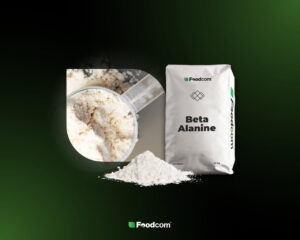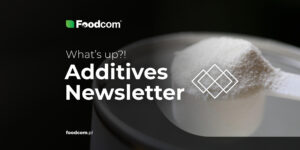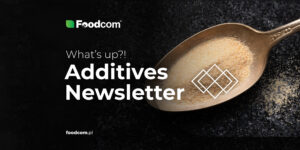- Micronized creatine 80 mesh, caffeine anhydrous, and L-carnitine are gaining importance as key ingredients in modern functional products.
- The European Union is close to achieving its 2030 climate targets, but Poland, Belgium, and Estonia are lagging behind with their implementation plans.
- Cyprus faces serious barriers to its energy transition, including a lack of connection to the EU grid and outdated infrastructure.
- The US continues to import Russian fertilizers despite sanctions pressure, destabilizing the global market and affecting prices.
Welcome to Partners!
Welcome back to our newsletter!
May 2025 saw key changes in the dietary supplement industry, climate policy and global trade. Demand for micronised creatine, anhydrous caffeine and L-carnitine in various forms continued to rise, reflecting the growing interest in functional products. At the same time, the EU moved closer to meeting its 2030 climate targets, although countries such as Poland and Cyprus still lagged behind. Meanwhile, the US maintained its reliance on Russian fertilisers, avoiding new sanctions for the time being. Here’s what influenced markets and politics this month.
Let’s take a look at what else is happening in the additive market!
Creatine 80 mesh
The global creatine market continues its rapid growth in 2025, fuelled by increasing interest in supplementation among athletes, fitness enthusiasts and functional food manufacturers. Micronised 80 mesh creatine is gaining particular popularity due to its high solubility and bioavailability, resulting in better absorption and effectiveness. This form of the raw material is increasingly being chosen by manufacturers as an ingredient in modern pre-workouts, capsules, shots and protein bars. In Poland, we are seeing an increase in demand for fine-granulated creatine also due to the easier technological process: less dusting, better homogeneity of blends and higher quality of the final products.
Caffeine anhydrous
Caffeine anhydrous 2025 maintains its position as one of the key active ingredients in the dietary supplement, functional beverage and OTC product sectors. Thanks to its purity and water-free form, it allows for precise dosing, fast action and high stability in formulations ranging from tablets and capsules to RTD drinks and functional gums. Manufacturers value it for its versatility and compatibility with other ingredients, making it easier to design complex formulations, including in the nootropics and energiser segments for professionals. Market growth is also being driven by new formats – such as extended-release products – that address the needs of consumers who require longer lasting effects and greater concentration throughout the day.
L-carnitine
The L-carnitine market is growing steadily in 2025, with increasing interest from manufacturers of dietary supplements, functional foods and animal feed. Known for its role in transporting fatty acids to the mitochondria, L-carnitine supports physical performance, metabolism and fat reduction. Among B2B customers, there is a growing demand for different forms of the raw material – from tartrate and acetyl-L-carnitine to aqueous solutions – which allows the ingredient to be easily adapted to specific types of products: shots, capsules, liquids or veterinary products. It is also increasingly used in combination formulations – e.g. with CLA, caffeine or B vitamins – offering customers ready-made complexes to support healthy metabolism and energy.
Interested in a product? Contact us: foodcom@foodcom.pl
What else?
EU almost reaches 2030 climate target – but with gaps and shortfalls from Belgium, Estonia and Poland
The European Union is on track to achieve a 54% reduction in greenhouse gas emissions by 2030 compared to 1990, bringing it closer to the official target of 55%, the European Commission has announced. The condition is full implementation of current and planned national and EU measures. Belgium, Estonia and Poland have not submitted updated NECP plans on time, making it difficult to fully assess progress. Although emissions have already fallen by 37% with a 70% increase in GDP, the Commission points to gaps in meeting the targets: reductions in the transport, agriculture or construction sectors may only reach 38% instead of the required 40%, the share of RES will be 1.5 percentage points lower, and in the area of forestry a gap of 45-60 million tonnes of CO₂ is projected.
Cyprus struggles to meet climate targets: isolated, fuel-dependent and with an outdated network
Cyprus is facing significant challenges in achieving its 32% greenhouse gas emissions reduction target by 2030 (relative to 2005), mainly through its lack of connection to the EU electricity grid, Minister of Agriculture Maria Panayiotou told the World Utilities Congress in Abu Dhabi. Energy isolation, infrastructure constraints and geopolitical tensions have held up work on a key project – the Great Sea Interconnector cable to connect the island to Greece and ultimately to the EU and Israel. Although Cyprus has a large solar potential, its outdated grids cannot cope with RES integration. The government stresses the need for multi-million dollar investments in upgrading the energy infrastructure, while preserving social conditions and the principles of a just transition.
US fertiliser market dependent on Russia – tariffs threatened, but Trump puts decision on hold
Russia has become the dominant supplier of nitrogen fertilisers to the US, with as much as 64% of urea imports coming from there in May, raising concerns about possible new sanctions or tariffs. However, President Donald Trump, despite increasingly strained relations with Putin and criticism of the war in Ukraine, has declared that he will not impose new restrictions, arguing that this could damage truce negotiations. Following April’s announcement of 10% tariffs on fertilisers (excluding Russia and sanctioned countries), prices on the New Orleans market rose by as much as 34%, reaching their highest level in two and a half years. Russia also accounts for 62% of UAN imports to the US. While access to cheaper, non-sanctioned Russian product eases price pressure, traders fear that this channel may soon close. New EU tariffs on Russian fertilisers could further increase the flow of supply to the US.
![Functional additives as a competitive advantage – regulatory challenges remain [68th Edition of the ADDITIVES Newsletter] Functional additives as a competitive advantage – regulatory challenges remain [68th Edition of the ADDITIVES Newsletter]](https://foodcom.pl/wp-content/uploads/2023/08/Foodcom_SA_Additives_Newsletter-1520x760.jpg)




![Zamykamy rok z przytupem - podsumowanie rynku dodatków w 2024! [65 Wydanie Biuletynu ADDITIVES] Zamykamy rok z przytupem - podsumowanie rynku dodatków w 2024! [65 Wydanie Biuletynu ADDITIVES]](https://foodcom.pl/wp-content/uploads/2024/12/newsletter-additives-summary-300x150.png)

